Nobody likes creepy crawlies, let alone seeing photos of them. But, these dangerous centipedes are exceptional because you need to know them in order to avoid them. The thing that we all know about centipedes is that they are scary, and some of them are venomous. Little did you know that there is more because some centipede species are so dangerous and harmful to us humans. Today, we will look into the most dangerous centipedes that can kill people and our pets. Let’s hope that your area is not the habitat of these creepy crawlies, so take a look.
1Giant Scolopendridae
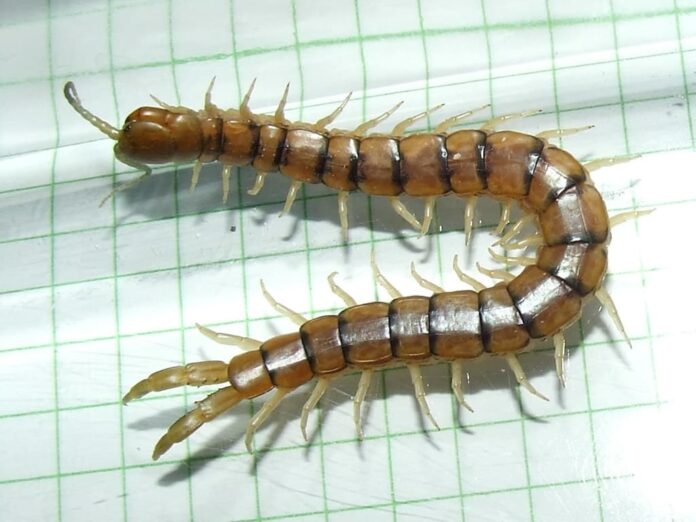
Habitat: Australia
Looks like most dangerous animals are always from Australia, and this centipede is one of them. These large centipedes can grow up to 30 centimeters, and the large size allows them to eat mice and lizards easily. The bites from Giant Scolopendridae can cause severe pain which lasts for days. You can tell by their large dark flat body along with yellow legs, this one looks really scary.
2Scolopendra Cataracta
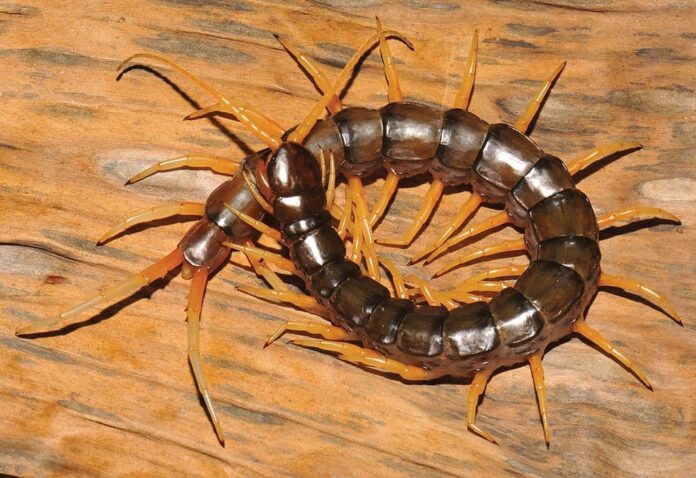
Habitat: Southeast Asia
If you think getting in the water will save you from a centipede bite, think again. What you are looking at is the very first amphibious centipede that is large and scary-looking with a unique ability. This type of centipede can swim and walk underwater just like it does on land. Scolopendra Cataracta can grow up to 20 centimeters long, and these centipedes are venomous and carnivorous. I feel bad writing this because these dangerous centipedes live in Southeast Asia; I am from Southeast Asia.
You can notice this centipede species by their big size along with long legs and dark, greenish-black color. Maybe you should not turn over rocks beside the streams when you are in Southeast Asia especially Laos and Thailand. These crawlies are pretty fast, and they might surprise you with a deadly bite.
3Scolopendra Cingulata
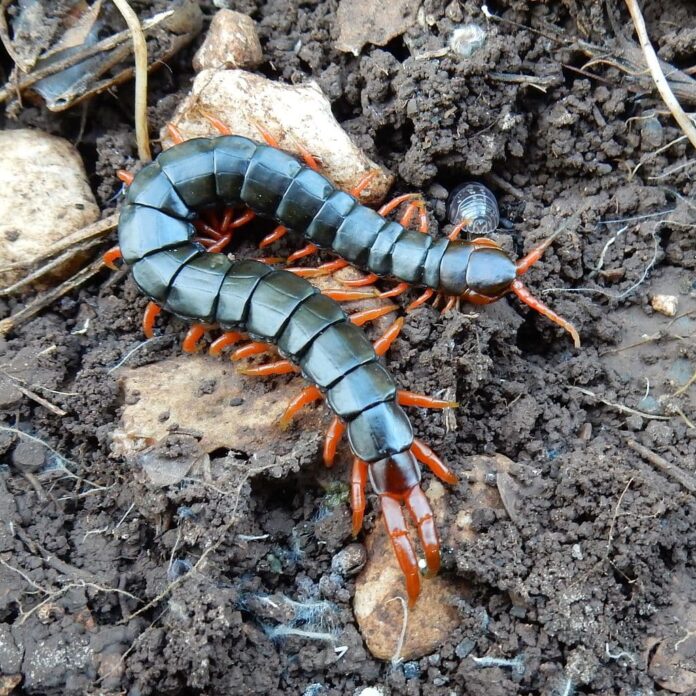
Habitat: Mediterranean Area
With a length of just about 10 to 15 centimeters, some people might underestimate its ability of killing. Its venom might not be as toxic as other centipedes on our list, but it does not mean it is okay to stay near one. These are one dangerous centipedes that attack and consume any animals that it wants to eat even larger than themselves. There was one time a snake swallowed one of these guys just to be eviscerated by the centipede from the inside out. Poor snake.
4Scolopendra Galapagoensis
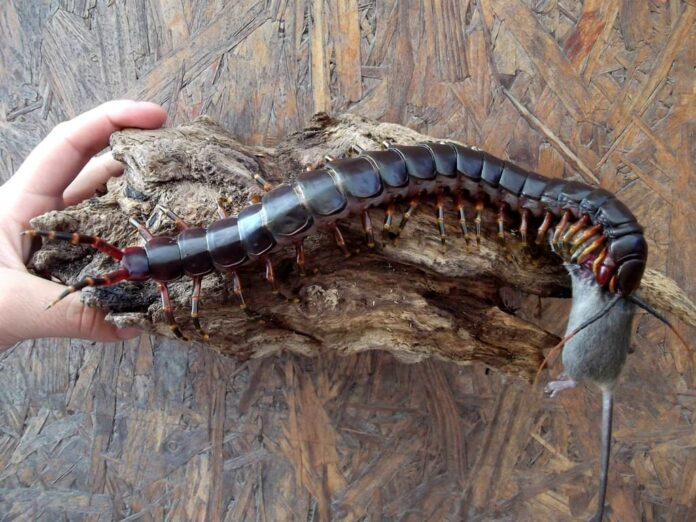
Habitat: Galapagos Islands
Scolopendra Galapagoensis aka Darwin’s Goliath Centipede is one of the largest centipedes on earth. These are dangerous centipedes since they have large poisonous mandibles that kill. The centipedes use their mandibles to capture prey, and those mandibles deliver venom along with great pain. This centipede species can grow up to 30 centimeters, and they are really big. These centipedes are varied in color, but they are all dangerous and venomous to humans.
5Scolopendra Gigantea
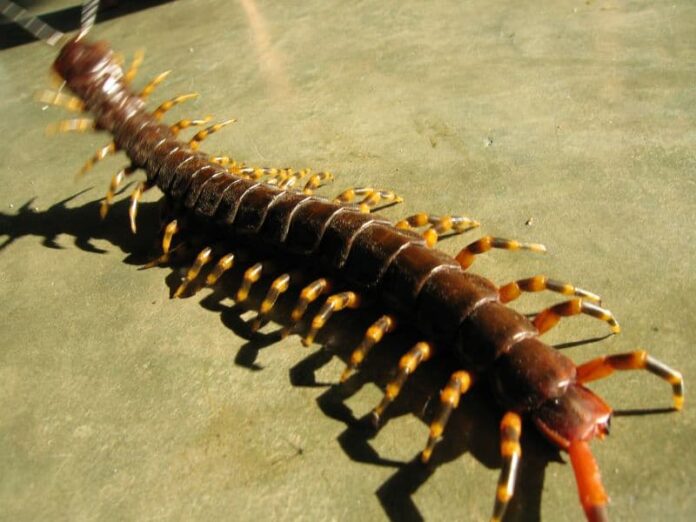
Habitat: South America, the Caribbean
Here we have the largest centipede in the world that can grow up to 35 centimeters or more in length. Large and scary, this centipede species has a unique strategy that can catch bats for food. These centipedes can climb cave ceilings and hold or manipulate their heavier prey with only a few legs attached to the ceiling. These centipedes can run quickly and climb surfaces easily, and they feed on many different insects and small birds.
One human death has been confirmed of a 4-year-old child back in 2014 in Venezuela. The kid died after being bitten by a giant centipede that hid inside an open soda can. The venom from Scolopendra Gigantea is very strong and painful, so stay away from them at all costs.
6Scolopendra Heros
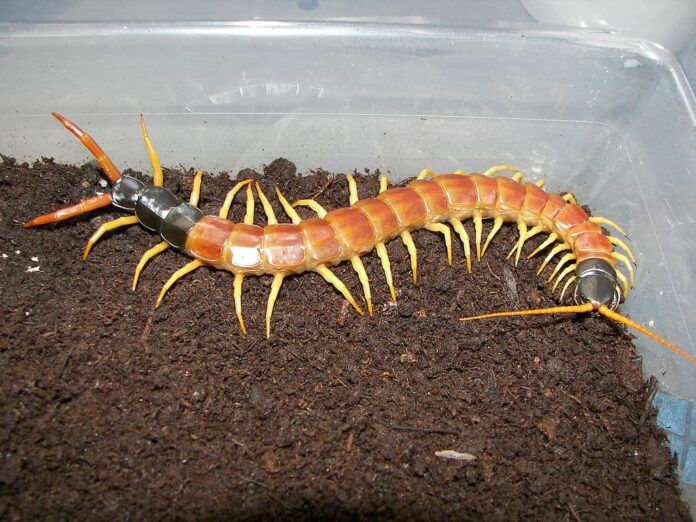
Habitat: Southwestern United States, Northern Mexico
No bite is needed, this centipede species can cut you by just walking on you. The cut is both painful and venomous because the poison will be produced on its legs which will seep into the cuts. Scolopendra Heros aka Giant Desert Centipede is the largest centipede in North America. The special ability of this type of this centipede is that it is capable of reaching into the air to grab small flying insects.
The bites from these dangerous centipedes are very painful, and they cause sharp, local pain, and swelling. At the same time, the bite may also cause nausea, headache, and localized skin necrosis. Not many deaths have occurred, but severe symptoms can lead to kidney failure and heart attack. You can notice them by their distinct red head and greenish-black body and tail.
7Scolopendra Morsitans
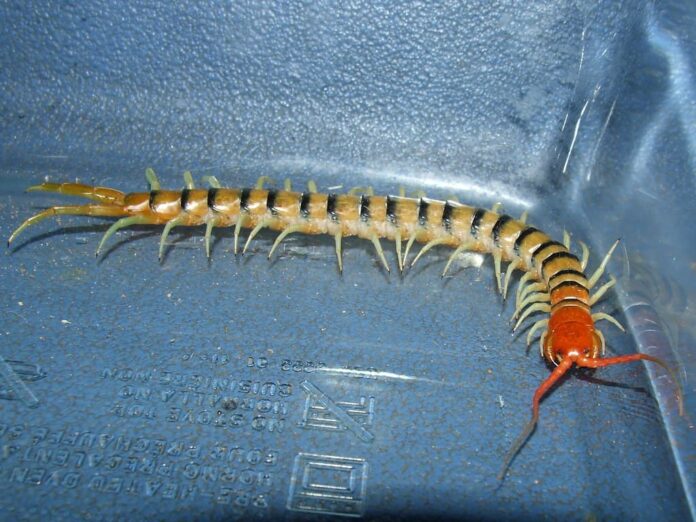
Habitat: Australia
The bad thing about Scolopendra Morsitans is that there are more other related species, and all of them are dangerous. That includes the Chinese Red-Headed Centipede, Texas Red-Headed Centipede, and more. Each of them is gifted with painful bites that can cause extreme pain to both humans and animals. Such species go by many colors, but one common resemblance is their red head that you can easily notice at first look. The larger they get, the larger their prey is; and always make sure to not get bitten by any of the red-headed centipede species.
8Scolopendra Polymorpha
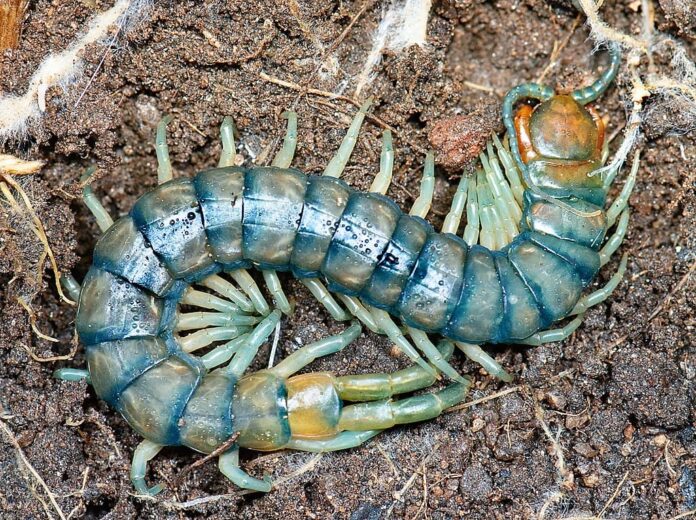
Habitat: Southwestern United States, Northern Mexico
Known as desert centipedes, you can find them in tropical climates. They use their mandibles to pinch their prey and inject venom to make it easier for them to kill and eat. You can easily recognize them by one dark lateral stripe on their body segments. That is how they got their name Tiger Centipede or Tiger-Stripe Centipede. These centipedes are known to hunt and eat rodents as well as frogs, so you can tell that their bites are very strong and painful.
9Scolopendra Subspinipes
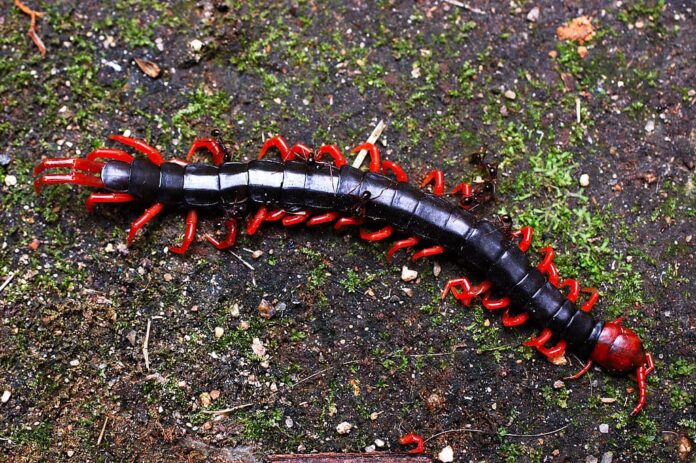
Habitat: Indian Ocean, Tropical and Subtropical Asia, South & Central America, the Caribbean
Being one among the largest centipedes, this species can grow up to 20 centimeters. This type of centipede has 21 body segments, each of which has one pair of legs. As for the color, it is usually red or reddish brown with yellow or yellow-orange legs.
They are active and aggressive predators that prey on any animal they can hunt. The bites from these centipedes are even more poisonous than many snake bites. Usually, these centipedes like hiding in damp woods and sometimes inside shoes. So always make sure to check the shoes in case you find one of these cuties.
10Scutigera Coleoptrata
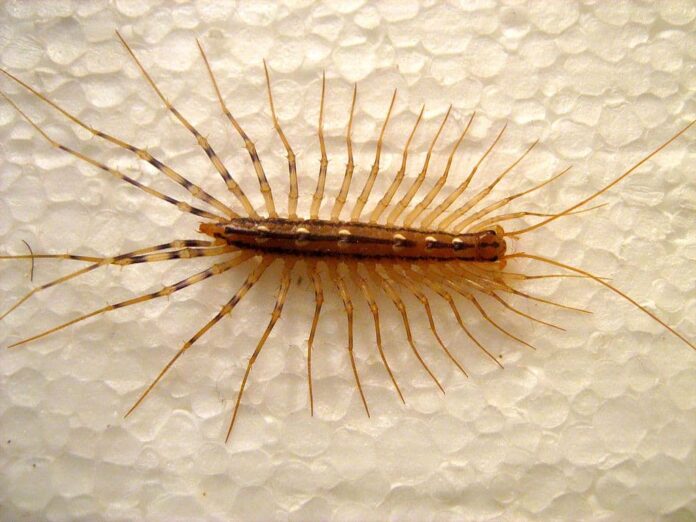
Habitat: Mexico, the Mediterranean
The bad news is that this scary-looking centipede is found in buildings and other dark places in the house. These house centipedes are yellowish-gray in color, and they have up to 15 pairs of long scary legs. They are usually harmless to humans, but if bitten, you will definitely feel the pain. Deaths only occur when there are allergic reactions to the venom of these centipedes.
Related Post: Dangerous Insects That Can Kill You



